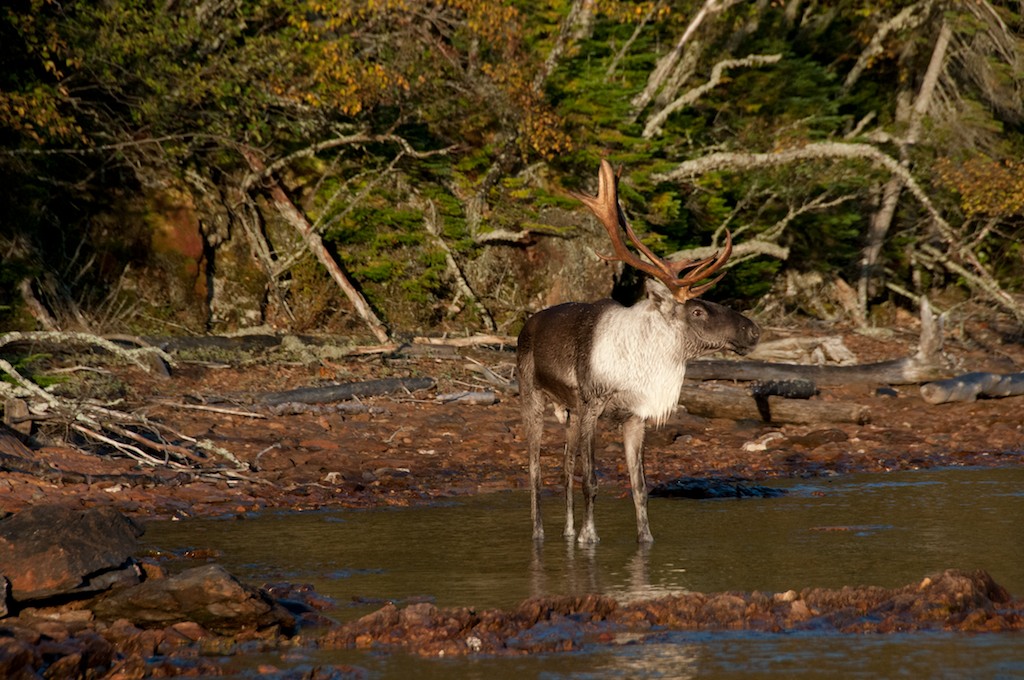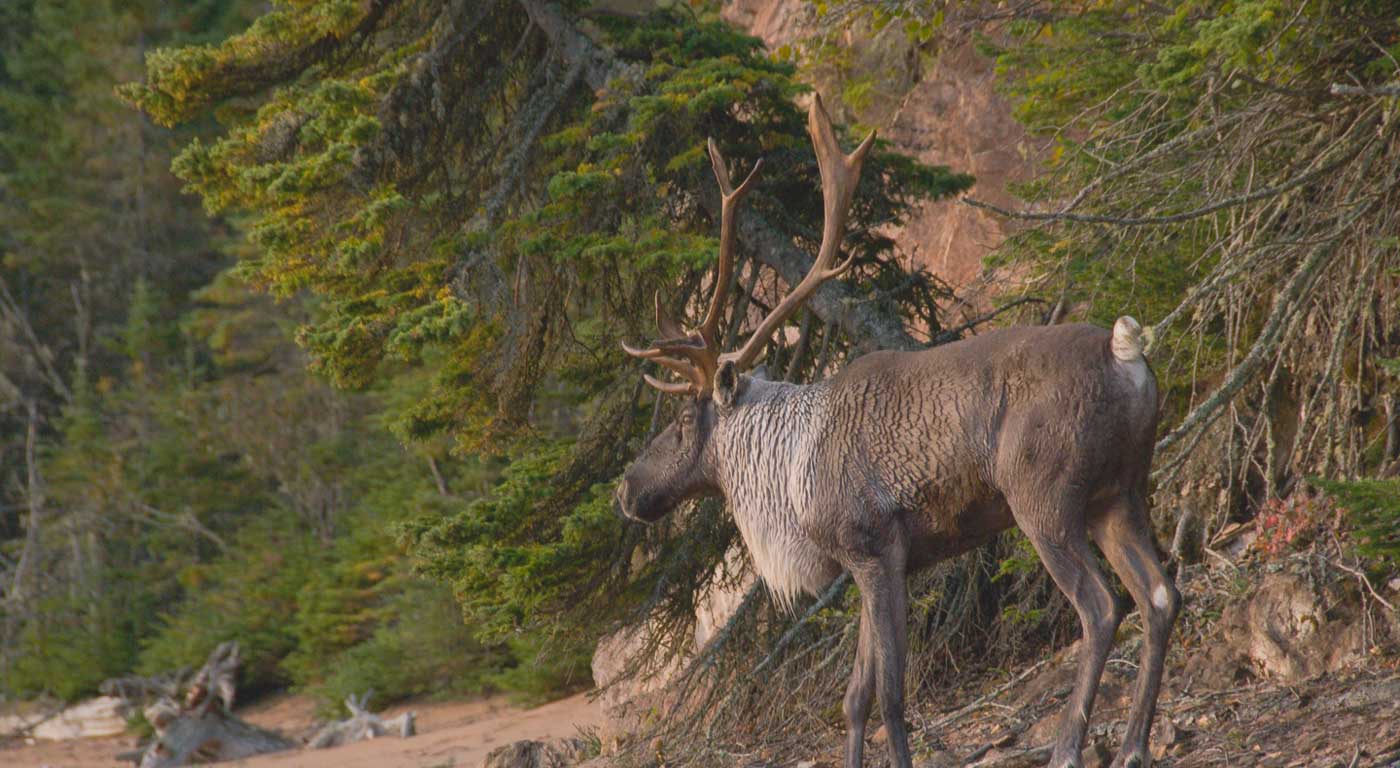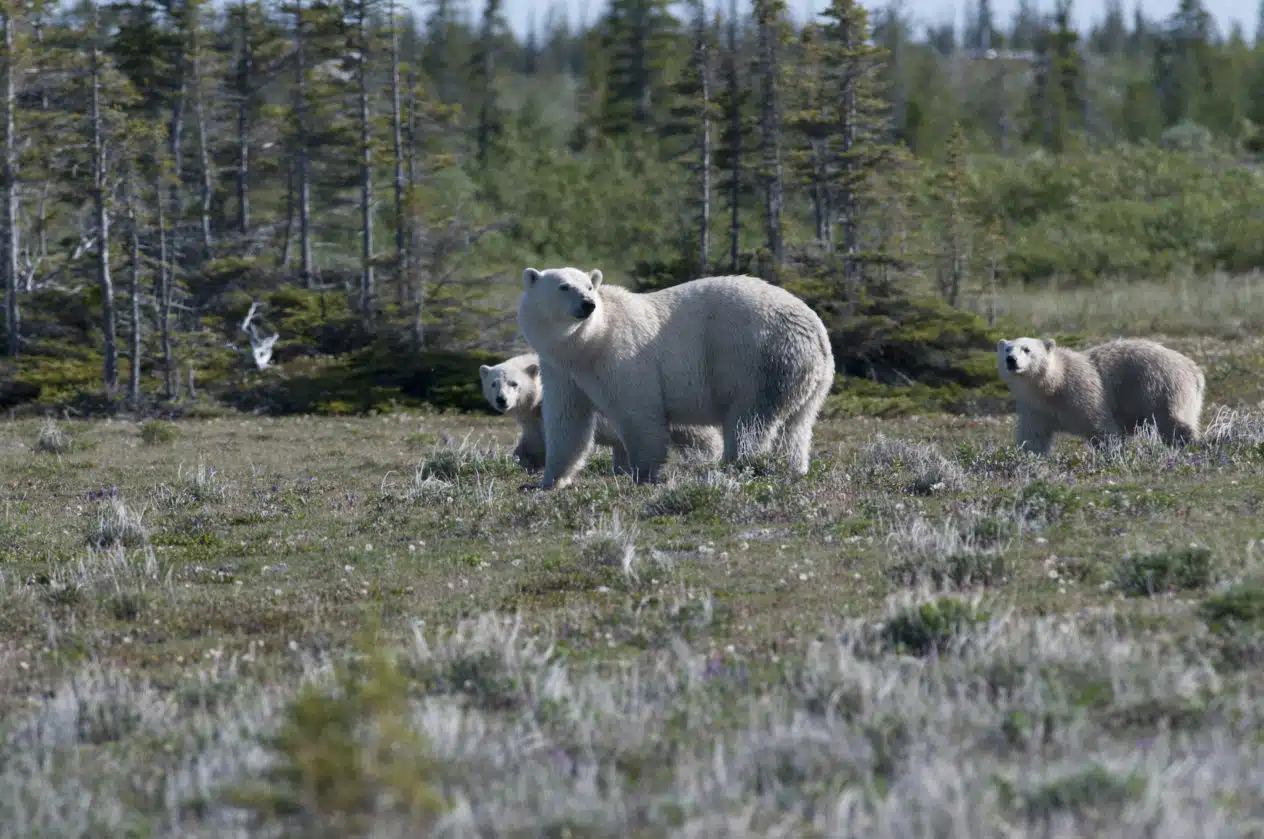CPAWS is working to protect threatened woodland caribou from extinction. These spectacular creatures need immense sections of unbroken boreal forest to find enough food and avoid predators. Caribou ranges continue to degrade as human activity, including logging, mining and road networks, push northward throughout Canada – Manitoba being no exception.
Woodland caribou (Rangifer tarandus) are shy cousins of the European reindeer and the migratory barren ground caribou of the northern tundra. They live in the boreal forest, in particular on carbon-rich, boreal forest peatlands. At one time they were found throughout almost all of the forested regions of Canada.
Half of woodland caribou’s habitat has disappeared in the last 50 years alone due to development and the species is now largely confined to areas of northern boreal forest. As industrial development continues to sprawl northward, woodland caribou are disappearing from the boreal forests. In Manitoba, they have vanished from a significant portion of their historical range, including all of Whiteshell Provincial Park. There are about 2,500 Woodland Caribou left in the province while only 10% of their habitat is protected.
Take Action
Protect Woodland Caribou in Manitoba
Conservation science tells us we must protect at least half of the Boreal in its natural state for it to remain fully functioning as a component of earth’s life support system.
Why are Woodland Caribou Disappearing?

Human Activities
Human activities fragment the forest: Logging, road-building and other forms of development like mining and oil and gas development fragment the caribous’ boreal forest habitat.

Increased Wolf Population
Caribou Disappear: Increasing wolf numbers kill off or extirpate local populations of Woodland caribou in and around disturbed forests.

Competitors
Competitors and predators move in: When a forest is disturbed, and begins to regrow, it provides plenty of food for the woodland caribou’s bigger relative: the moose. Moose thrive in new forests, and their increasing numbers eventually attract increasing numbers of their primary predator — the wolf.
Why are Caribou important?
The cold temperature and high fresh water content of boreal soils on which caribou live slows decomposition, resulting in deep, carbon-rich soils that can be thousands of years old. An acre of boreal forest can store two times the carbon of an acre of tropical forests like the Amazon. When the Boreal forest is developed or logged, its ability to absorb and store carbon is lost or reduced, and carbon is released to the atmosphere. A greenhouse gas, carbon dioxide traps heat in the atmosphere. High greenhouse gas levels affect global climate. When we protect caribou habitat, we take a big step in combatting climate change by storing greenhouse gasses.
The boreal forest is also the world’s largest source of unfrozen fresh water and provides food, supplies, and medicine for people.
Woodland caribou are an "umbrella species" — they’re sensitive to disturbance, and thrive in intact forest. As such, woodland caribou is a strong indicator species for the health of the broader boreal.
CPAWS' WORK
Woodland caribou in Manitoba were listed as threatened under the Federal Species at Risk Act in 2003, then under the Manitoba Endangered Species Act in 2006. The first round of caribou recovery plans was scheduled to be completed by the province in 2009. This never materialised.
With considerable involvement of CPAWS, the Manitoba government developed an updated caribou recovery strategy in October 2015. The strategy exceeds all of Canada’s others in Canada as it commits to protect and manage for 65-80% percent intact suitable boreal caribou habitat in 9 caribou management units.
The next step is for the provincial government to develop recovery plans for each of the identified caribou management units in Manitoba. Based on the new strategy, the first round of these plans was slated for completion by 2018. Once again, the province fell short. It’s 2023 and there are still no recovery plans for this threatened species.
In December 2022, the Governments of Canada and Manitoba finalised an agreement for the conservation and recovery of the woodland caribou in Manitoba. The federal government is giving the province almost a million dollars to do what it has failed to do so far.
Now, the initial plans for some caribou populations are scheduled for 2025. That’s sixteen years past the original deadline the province gave itself.
It’s encouraging to see renewed commitment to conserve this iconic Canadian species, but CPAWS remains cautiously optimistic, given that Manitobans have been let down many times over many years on this file. CPAWS will continue providing our recommendations to the Manitoba government in support of developing successful recovery plans.
CPAWS continues to advocate for the recovery of caribou through the protection of large-scale, intact habitats across Manitoba, as this is the only method proven to ensure the long-term survival of the species. This objective must be a key component of upcoming recovery plans. We are pleased that CPAWS’ efforts led to the caribou strategy acknowledging the need for large cores areas for caribou where forestry will not occur.
Related Articles

Seal River Watershed: Get to Know the Animals and Birds We Are Working to Protect

Protect Woodland Caribou – Fill in a Short Government Survey

